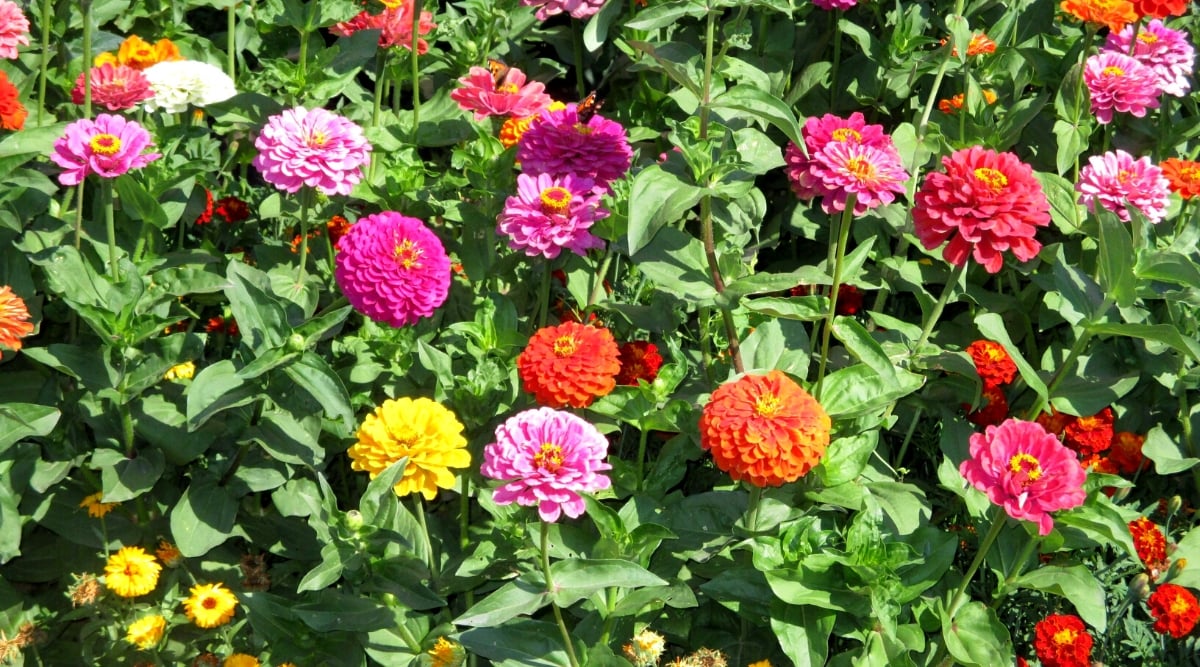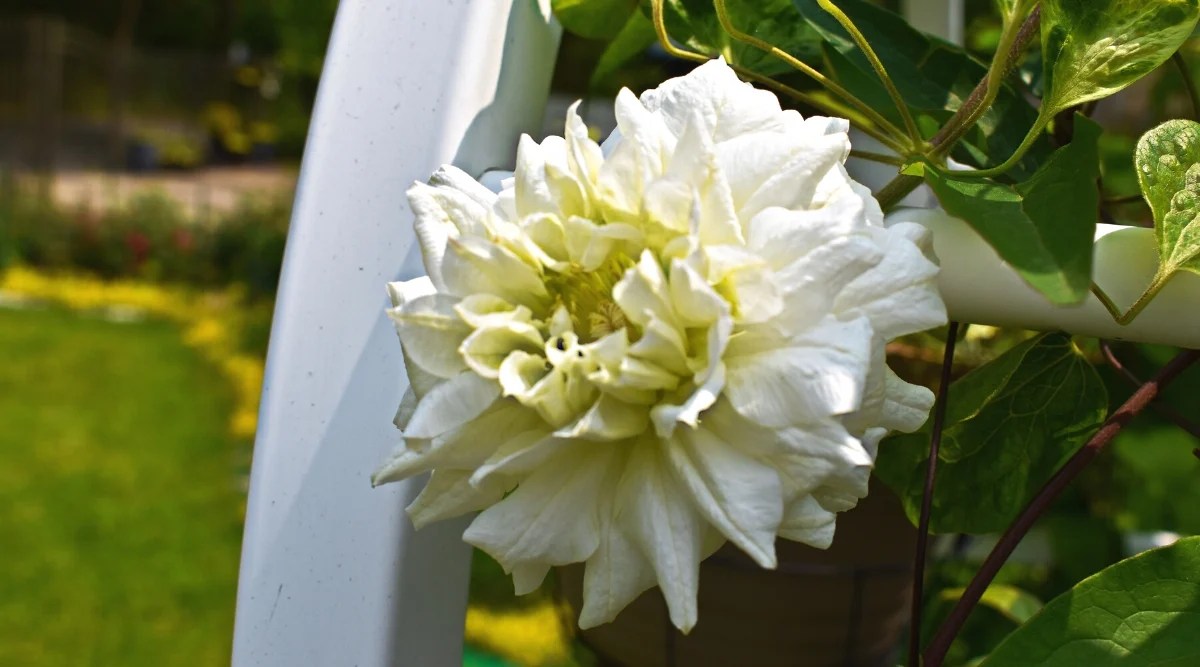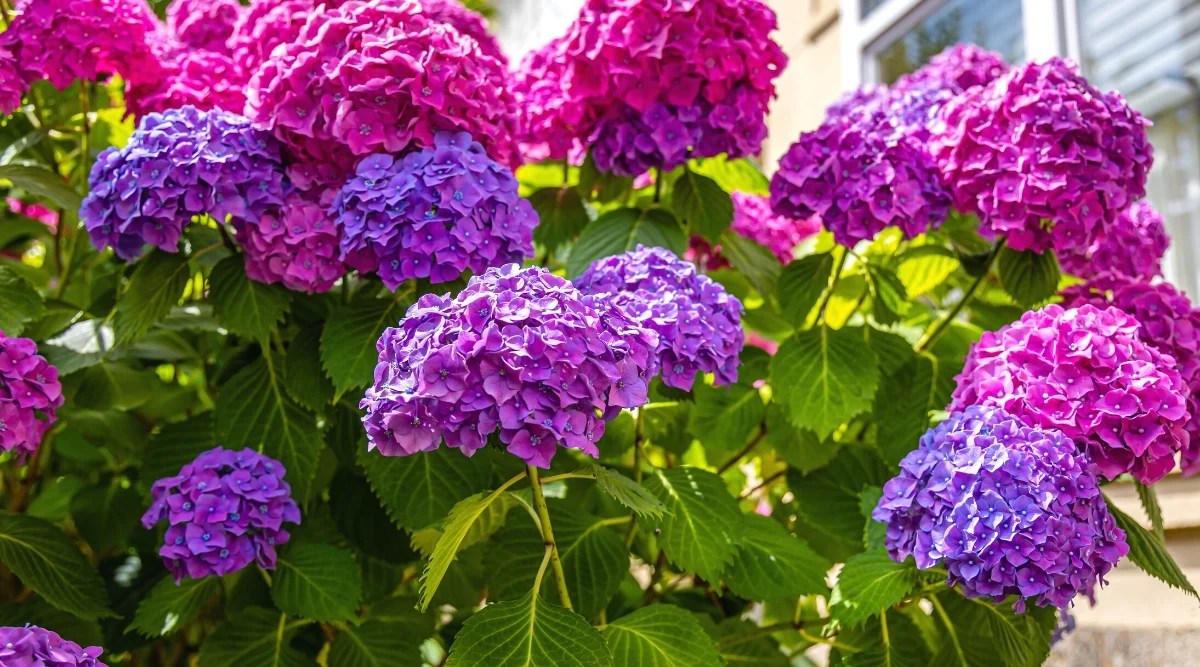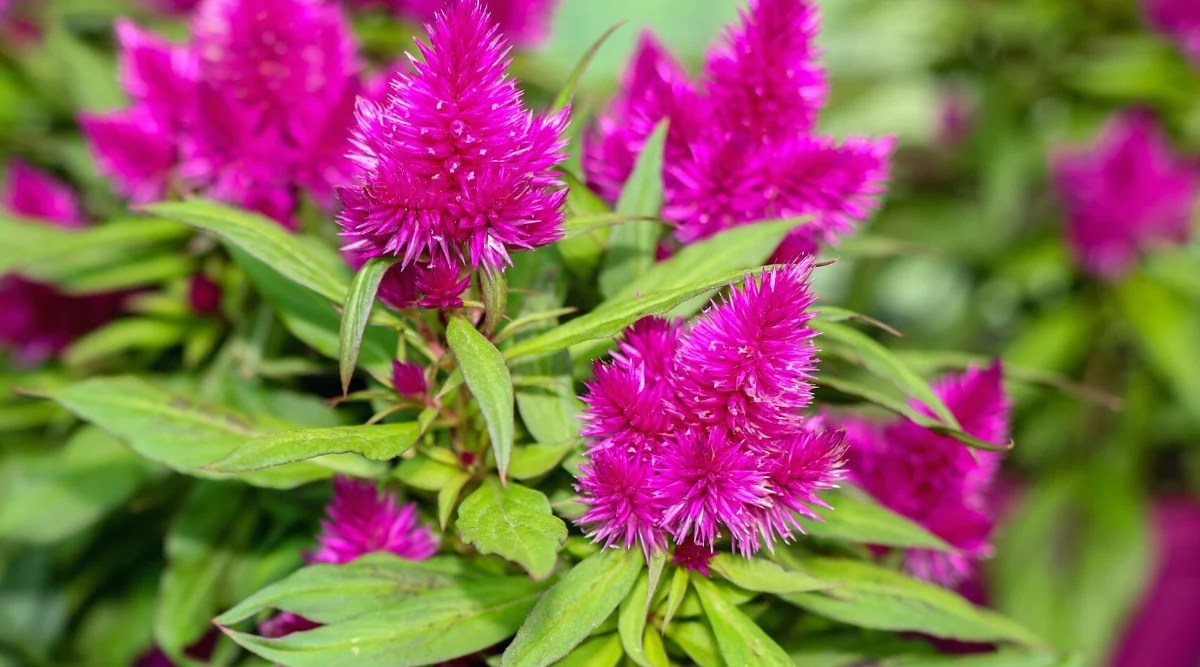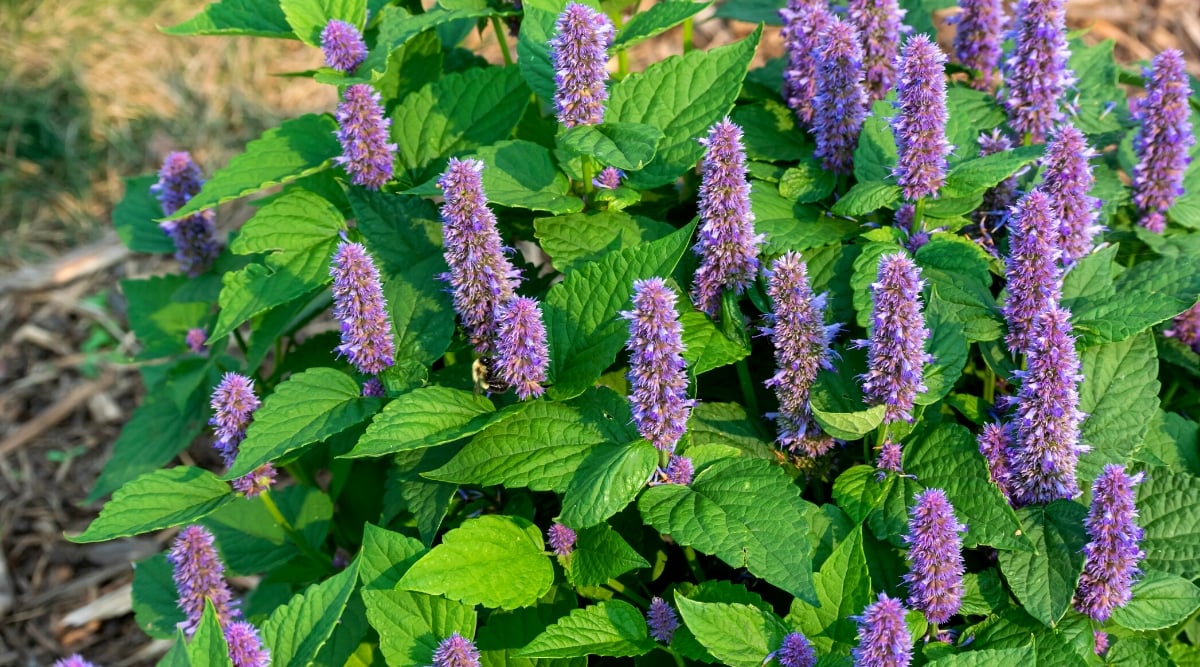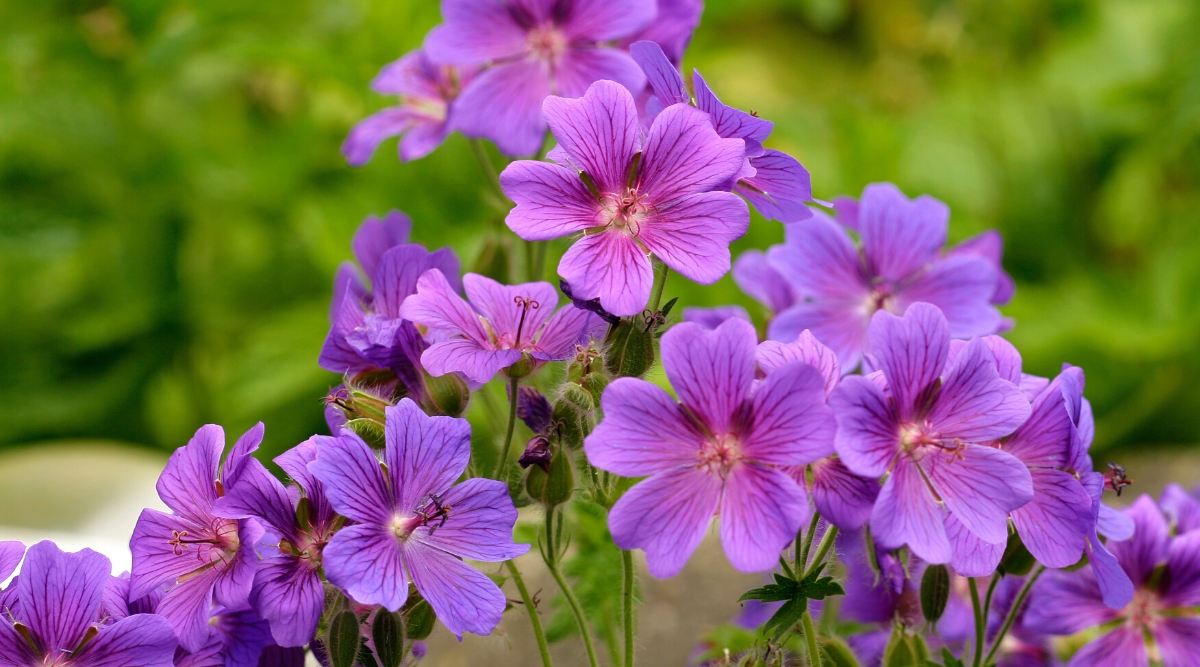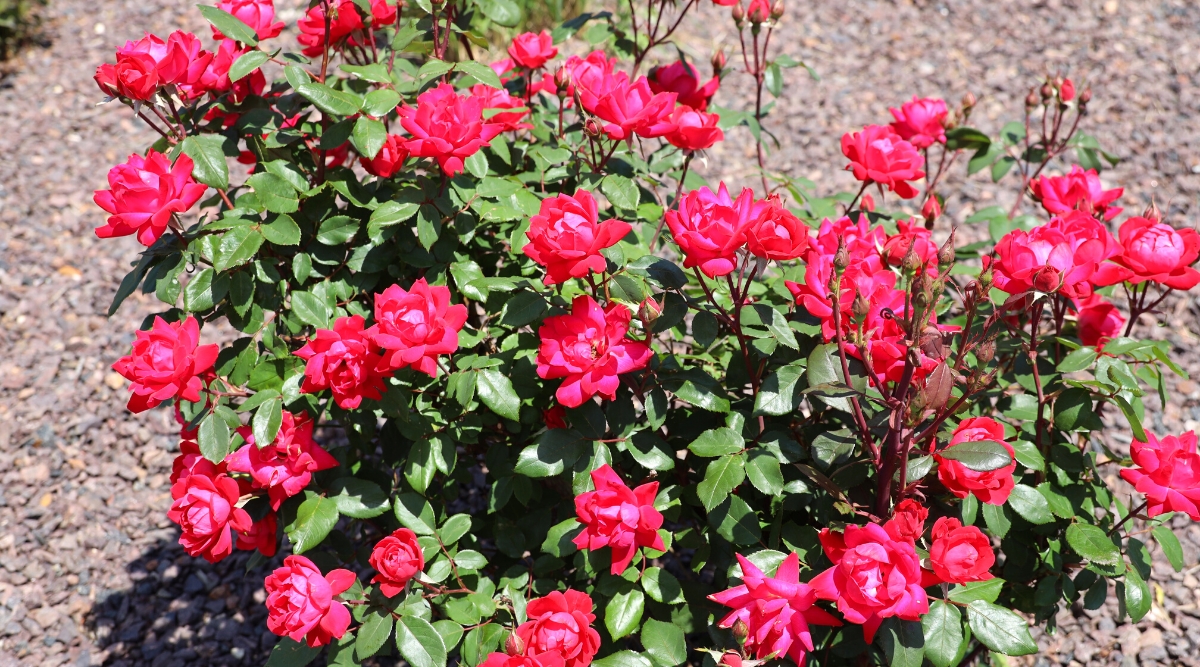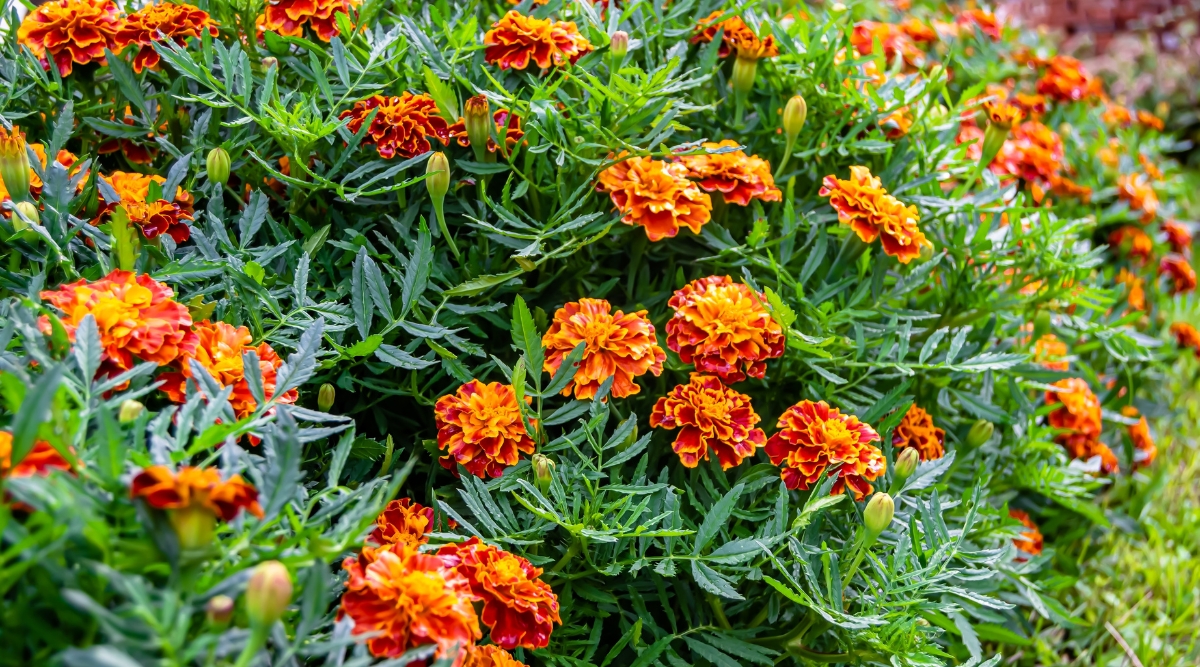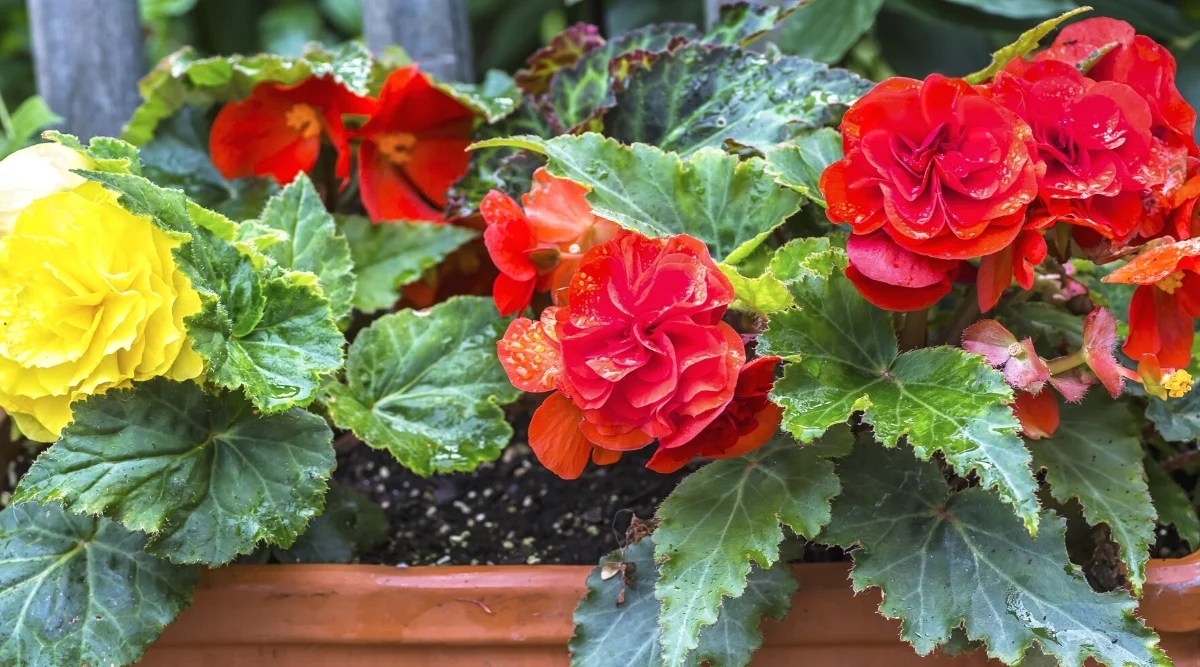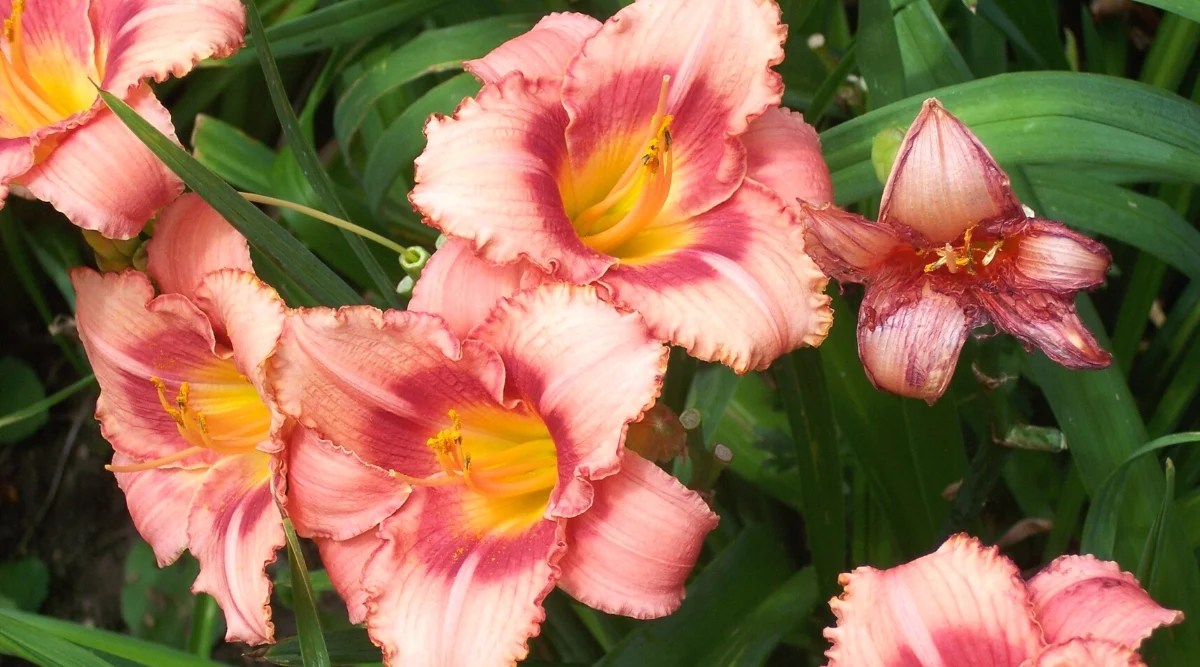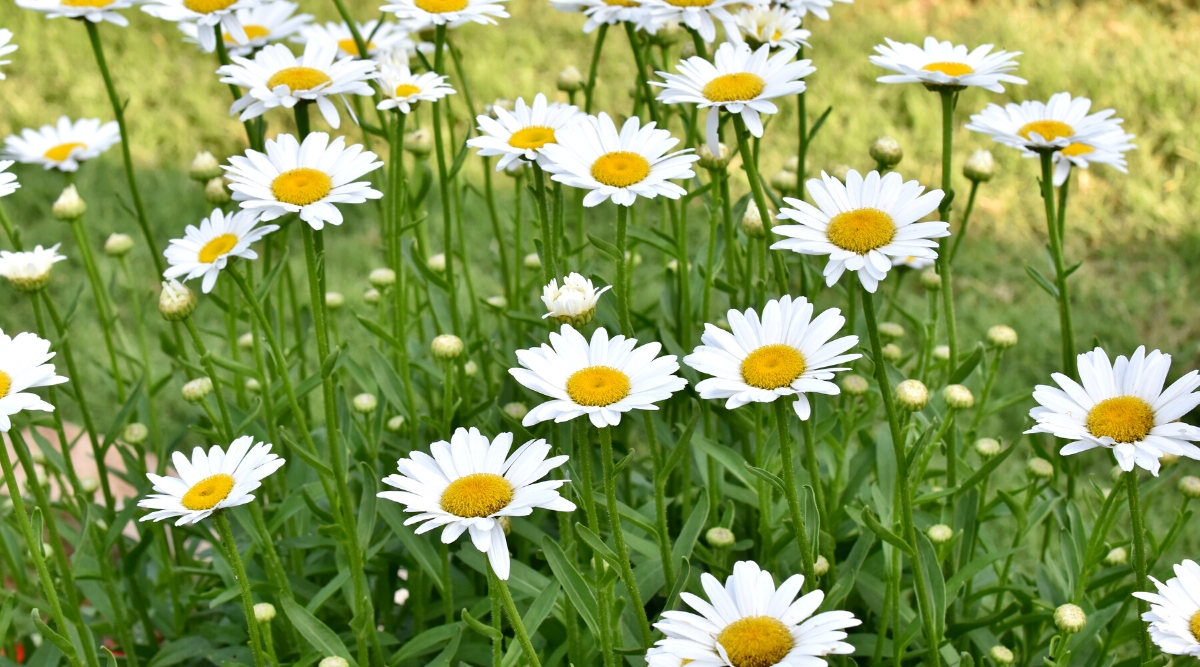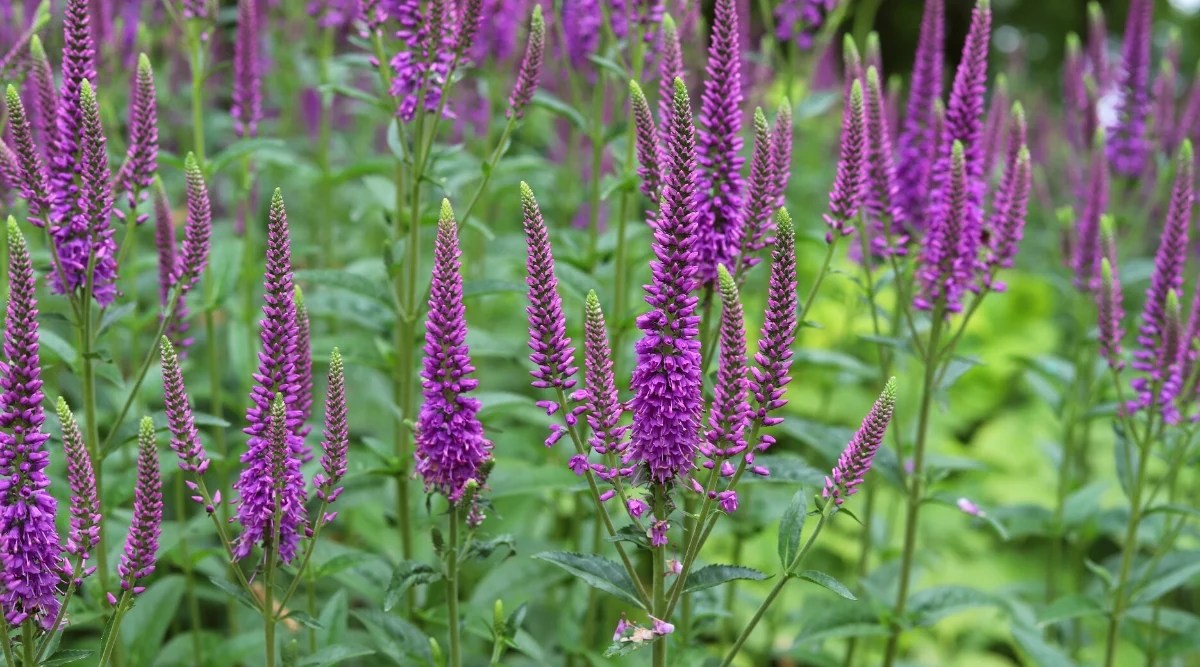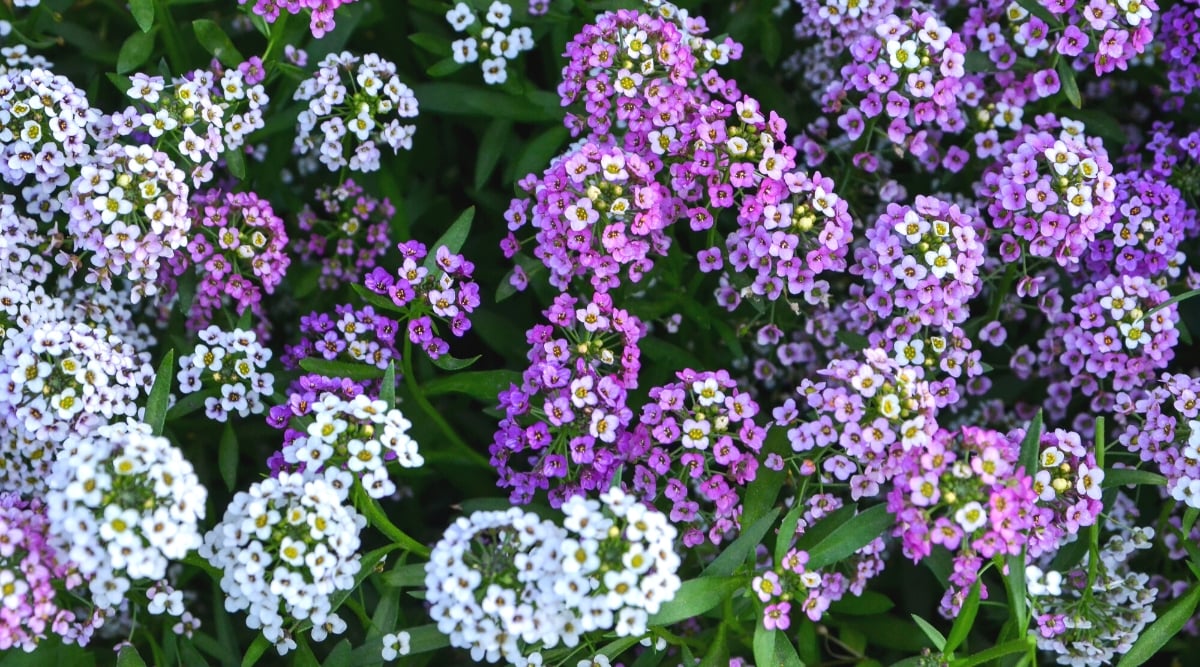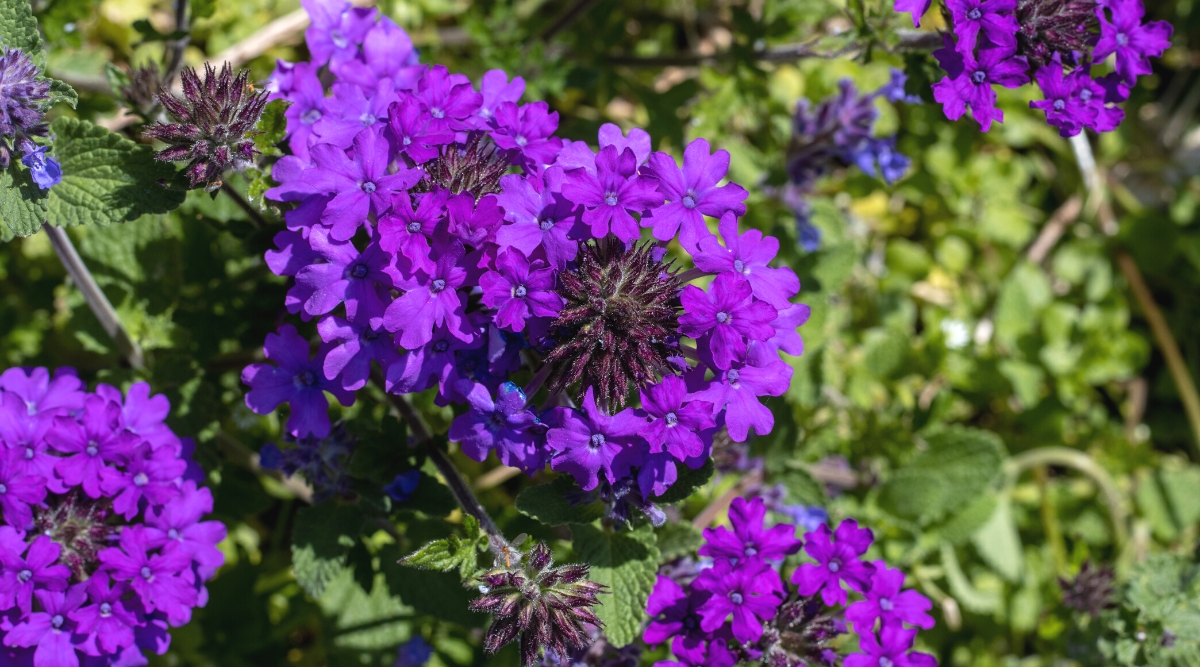Flowers
Are you in lookup of flower plant that will keep flower all season long ? There are many annuals as well as perennials that will flower for extended periods of time or that will produce a second flush altogether . In this article , gardening expert Jill Drago will share some of her favorite plants that will keep your garden full of colouration all summertime .
Contents

Claude Monet is famous for sound out , “ I must have peak , always and always . ” Most gardeners would agree , so it helps to have flowering plant that rebloom all season long without much effort .
Combining annuals with perennials will help oneself satiate in the gaps in your garden ’s colourful show , but many perennials will bloom throughout most of the time of year with niggling to no avail from you .
If you want to add more blossoms to your garden , consider a few of these27 flowering plants that will rebloom all season long .

Alpine Violet
This humble semi - evergreen reddish blue is an first-class addition to a forest edge or a rock-and-roll garden . Alpine violet produces deep fleeceable heart - shaped leaves . Each fresh purple blossom rises above the leaves on a svelte stem . For the upright shock , works alpine violet in pigeonholing .
Deadhead the fading flowers to prolong the bloom time and promote new blossom . Plant in well - drain soil for the most achiever .
Angelonia
If you are looking for a taller annual that will take your garden with bloom all summertime and command little to no sustainment , bet no further than Angelonia . Also have a go at it as angelface or summer snapdragon , this annual comes in shade of pink , purple , or white . Each plant will produce many stems , each covered in blossoms .
Angelonia stems will bloom from the bottom up . When the top efflorescence set about to blow over , snip the flower stalks , and the flora will rebloom later on in the time of year . Angelonia is a great annual to plant if you wantcut peak blooming into the fall .
Beach Rose
This toughroseis illustrious for its disease electrical resistance and tolerance to various develop conditions . The beach rise will be decorated with pinkish or white unmarried rose , each with a yellow center . When the flower slice , you will be rewarded with plentiful rosaceous pelvic girdle .
This gorgeous flower plant blooms in late springtime or early summer and typically reblooms later in the time of year , lasting until the first Robert Frost . Plant these rose in a hedgerow where you have a bad time getting thing to get orwhere you have arenaceous dirt .
Black Eyed Susan
For yellow perfection in your recurrent flower bed , addblack - eyed Susans . These Greco-Roman garden perennials are not bad performers , producing sensational yellowish daisy - similar flowers with deep brown chocolate-brown centers . They bloom on slender but tough stems that grow from lancet - mold leaves . They are well-heeled togrow from source .
When the blossoms fade , dress them off and prepare for the next round . Black - eyed Susans will bloom from summer until the first icing . If you would them to spread , entrust spent blossoms on the plant . Thisperennial is a fertile ego - cloud seeder .
‘Blue Lace’ Delphinium
Thislovely light blue delphiniumis a member of the New Millenium delphinium collecting , known for its prolific ability to rebloom and its tough stems . These tall heyday spikes are covered in low-cal blue flowers , each with a jot of lavender in the shopping mall .
‘ Blue lace ’ will grow up to 6 feet marvellous , providing excellent structural appeal to your flower beds or bungalow foundation gardens . When the first round of flower slice , deadhead the plants to encourage the next round of blooms which will arrive in late summer .
Catmint
For a skilful rationality , this stentorian perennial is a staple in many gardener ’ flower beds . count on your selected variety , this perennial produces purple or pinkish flower ear . One thing that holds lawful , regardless of your diversity selection , is the lush Ag leafage which grows in a very attractive heap shape .
Catmintwill efflorescence in early summertime . After this first round of bloom fades , deadhead with clippers or usegarden shearsto give the whole flora a haircut . You will see a second daily round of blossom in the late summer or other decline .
‘Cloud Ballet’ Iris
‘ Cloud Ballet ’ is a beautiful gloomy variety of rebloomingbearded fleur-de-lis . This particular iris has sky - blueish petals with white and yellow beards . The beautiful blue salad days will appear in late spring or early summertime before reblooming in belated summer or early spill .
Plant ‘ Cloud Ballet ’ in your flower bottom with well - draining ground . This is of the essence to prevent root word bunkum , which could defeat your iris plants . When the plant is not in bloom , the lance - shaped foliage will remain to add pursuit to your garden .
‘Cut and Come Again’ Zinnia
The name of thiszinnia seedcollection enunciate it all . The more you ignore these old maid , the more they will flower . With a rainbow of zinnias in this solicitation , you wo n’t require much else in your garden . Zinnias are easy to grow ! When you are ready to prune some blossoms for a vase arrangement , you will be pleased with how long they last in your vase .
Before you know it , new old maid will bulge up in your garden . These zinnias will continue to rebloom until your first frost .
‘Duchess of Edinburgh’ Clematis
This variety of clematis boast enceinte , everlasting lily-white double flowers , each of which can reach a diameter of 6 column inch ! ‘ Duchess of Edinburgh ’ is a lovely herbaceous climbing vine that is easy to grow ! This clematis offers two rounds of blooms .
The first is in the late give or early summertime , and the second is in the former declension . All you need to do is deadhead the first round of flowers to remove the way !
Be sure to corroborate your clematis with a strong treillage , arbor , or other garden structure to get the full effect of this beautiful plant . Cut back any dead stems in late wintertime or former spring , as well as after the first rosiness . This will help the clematis to rejuvenate and make loads of blossoms .

Endless Summer ® Hydrangea
The only downside to bigleafhydrangeasis that you only get one bloom per twelvemonth . Endless summer hydrangea are hybridized to grow peak on both sure-enough forest and Modern wood . These blossoms will be present all summer and into the drop .
There are a few varieties of endless summertime hydrangeas in various sizes and color . These miscellany include dwarf varieties as well as lacecap mixed bag . institute these shrubs in your foundation gardens or summate one to a large container or a tall raise garden bed such as thisbirdies option .
‘Flamingo’ Cockscomb
Cockscomb is a classical garden annual . The‘Flamingo’variety offers calorie-free pink flower which develop on windy stem . As these pretty efflorescence spikes age , they will turn silver , giving the plant life a two - toned result .
The bloom of youth period for ‘ flaming ’ common cockscomb is long , beginning in former outflow or early summertime and hold up until fall . As the flowers slice , snip them off . This will not only neaten up the plant ’s cosmopolitan visual aspect but signal to the flora that it can start producing its next round of efflorescence .
Giant Hyssop
Gianthyssopis a nice mid - size perennial that produces big bluish - purple spikes in summer and fall . The tube - shaped flowers attract hummingbirds and pollinators of all sorts to your gardens . The leaves are a bright refinement of putting green and book a beautiful form even after unfolding end .
As the bloom of the elephantine hyssop begin to fade , deadhead the blossoms to the nearest bent of foliage . This bantam garden chore will aid to advance the next circle of flowers that will last you until the first hoar .
Hardy Geranium
Hardygeraniumsmake beautifully refined addition to your border gardens . Their leaf is a intermediate shade of green and deeply cut . Masses of majestic or pink flowers will perch atop this pretty foliage . This first turn of blossoms is prolific and long - durable .
as luck would have it , hardy geranium will bloom a 2d fourth dimension if you take the time to deadhead and remove spent bloom . Keep these perennials well - water and free of any heating plant accent for the good possible operation .
Knock-Out Roses
These gorgeous hybridized roses that even the most beginner gardener will have success mature in their gardens . There are 13 different varieties of Knock - Out roses , each with a different size of it or colouring bloom .
The beauty of these roses is that they are self - cleaning , imply that they do n’t need deadheading , and they will continue to blossom on and off all season long until the downslope . All you require to do is provide enough sunshine and water ; you will have gorgeous rose shrub in no time .
Lantana
Lantanais a bright colored industrial plant that grows as an annual or recurrent , reckon on where you live . This plant produces clusters of small flowers that pack a big punch . Most varieties are multicolored and fit nicely into flower beds or windowpane box .
When the flowers fade on your lantana plants , it is time to seize your garden tinsnips and remove the spent clump . If you wait too long , you will notice shiny globe seem on your plant ; these are the lantana seeds . To keep your lantana bloom , all you involve to do is deadhead regularly !
Marigold
Everyone knows amarigold , and everyone should love a marigold ! I think these flowers are underrated . They are a cinch to grow , are spectacularly beautiful and bright , help to keep critter off from your veggie , and will blossom from early summertime until the first freeze .
I implant theFavourite BlendFrench marigold around my vegetable garden and as a borderline plant for my perennial layer every year . I have never been disappoint . The growth habit is shaggy-coated , and the bloom keep coming . verbatim - sow these seeds into your soil , or originate them in seed starting trays indoors in February .
Million Bells
Prized for its ability to fill and splatter out of your summertime containers , million bells will leave season - tenacious flower . Million bells resemble petunias but have small prime and more compendious growth . you could discover varieties in just about any color under the sun .
Million bells will bloom all summer long without any need for deadheading . If you notice stem get too leggy , trim those stems back and straighten up your plant .
Nonstop Begonia
Nonstop begonia are a collection of begonia that have become very popular and for good grounds . These begonia offer the same waxy leaves and gorgeous flowers for your shady spot , but they will keep producing flowers all season long without your aid .
The nonstop begonias come in a variety of gorgeous people of colour as well as bichrome variety show . These annuals are beautiful when planted in your container and hang basketful but are also fantabulous when planted in your flower bottom .
Purple Coneflower
Purple conefloweris a Greco-Roman garden flora that will fill your bloom beds with beam color throughout the summer and into your first frost . The daisy - like flowers will bloom from magniloquent stems that grow from attractive spear - shaped leaf that rest a bright unripe throughout the growing season .
Deadheading your purple coneflower will promote the plant to push another solidification of blooms . These flowers will continue to pop up on your plants until your first frost .
‘Rosy Returns’ Daylily
The ‘ Rosy Returns ’ day lily is a beautiful reblooming daylily look at an early bloomer . As with all daylilies , these large flower typically only bloom for 24 hr at a time . Luckily , ‘ Rosy Returns ’ is loaded with buds that will continue to bloom throughout summertime .
When you notice drop blooms on your plant , absent them by hand . This will neaten up your garden while also encouraging further blossoms . When the total stubble has end flower , cut it back to the ground and revel the long forage - similar leafage until the first frost .
Shasta Daisy
Shasta daisies are happy , gay daisy with a firm reputation . These prime are your classic whitened daisy with a hopeful chicken center . The blossom bloom above thick green foliage that is attractive throughout the time of year .
Shasta daisy flowers will stay in heyday for weeks . Snip away spend flowers to extend the bloom menses of your plant . You have many options for Shasta daisy , each with different blossoms , including double flowers .
Snapdragon
Snapdragonsare beautiful , bright flower that add dependable coloring to your container and flower beds . These spiked flowers will last for months , beginning in the natural spring and flowering into the fall . snapdragon are typically grown as annual , but they can grow as perennials if protected over the wintertime .
When the first round of peak begins to languish , trim them off , and you will be blessed with a repeat bloom after in the season . These flowers bloom in spectre of yellow , orange , ruby-red , pink , purplish , and bicolor . There is a snapdragon for every garden !
Spike Speedwell
speedwell are humiliated - maintenance perennials for your bloom beds . look on which form you take , the foliage of speedwells is low - growing and attractive , although nothing too extraordinary . you could determine purple , pinkish , or white varieties , each with attractive spiked flower .
To proceed or lengthen the bloom prison term of your speedwell , deadhead any drop bloom . Even without deadheading , the bloom of youth time should last through most of the summer .
Sweet Alyssum
This endearing and fragrant yearly is quintessential for your containers and flower beds . Sweet alyssum ’s white-hot or purple flower are a perfect accent to whatever plants you have uprise nearby . It is very easy tostart from semen !
Cut the intact flora back by one-half when your sweet-scented genus Alyssum ’s first bloom cycle slice . This will help keep the industrial plant tidy while also helping to promote a second round of peak .
Tickseed
You ca n’t go wrong withtickseedfor a bright sunny , yellow addition to your garden . This perennial is also normally advert to by its botanical nameCoreopsis . This plant grows into a beautiful mound of foliage . Depending on the multifariousness , it produces bouquet of yellow , orangish , or red peak . ‘ Full Moon ’ is very popular due to its excellent performance and easygoing nature .
When the flowers evanesce , give your tickseed a haircut and await the next daily round of flowers . You will not be disappointed when these yellowish beauties fill your fall garden with the everlasting splash of color .
Trailing Verbena
Trailing verbena is an excellent annual for blossom bed , containers , and window boxes . The creeping vine and leaves are medium unripened , but as always , the flush are the stars of the show . Each cluster of flowers is made up of dozens of smaller efflorescence that will last for week . give chase verbena is useable in many different colors , as well as bicolor .
Deadhead your chase after verbena as the bunch of heyday start out to fade . This will preclude the vervain from make seeds and encouraging raw blossoms . Deadheading will also help neaten the flora by trimming back any leggy emergence .
‘Violet Queen’ Salvia
‘ reddish blue Queen’salvia is a beautifullow - alimony shrubfor any full - sun repeated garden . It produces beautiful purple spiked flowers that hover over attractive rounded foliation . When these prime start to melt , deadhead them . You should wait to see another bloom in a few weeks .
Planting ‘ Violet Queen ’ salvia in mathematical group will only increase their beauty . These perennial will execute wonderfully in most soil types . They experience few issues with pests or disease and are very scummy maintenance once established .
Final Thoughts
Adding any of these plants to your garden will guarantee that you will haveseason - long flowers . You may need to get out into your garden to do some deadheading , but it will be worth your while . Remember to fecundate your perennials with efflorescence - advance fertilizers as needed , and keep them well - watered throughout the heating system of the summer .





